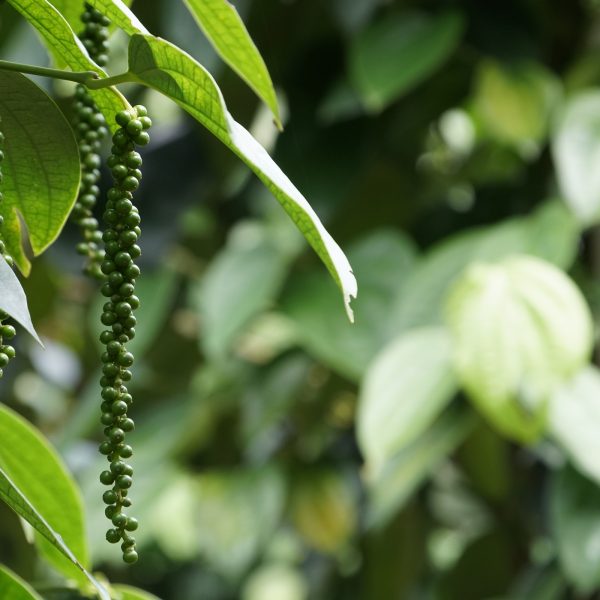-
How does it feel?
Lavender tincture or tea is aromatic and bitter. It also has a mildly soapy taste which is indicative of its saponin content. Lavender essential oil is familiar to most. It has a unique earthy, floral aroma and is widely used in cosmetics and aromatherapy. The oil is used both externally and as an inhalation to bring about calming effects.
-
What can I use it for?
 Lavender is high in levels of naturally occurring essential oils that have a profound effect upon the central nervous system. Lavender essential oil contains linalool which demonstrates sedative and anti-spasmodic effects upon the central nervous system and also the enteric (digestive) nervous system. It is this component that has made lavender such a renowned relaxant.
Lavender is high in levels of naturally occurring essential oils that have a profound effect upon the central nervous system. Lavender essential oil contains linalool which demonstrates sedative and anti-spasmodic effects upon the central nervous system and also the enteric (digestive) nervous system. It is this component that has made lavender such a renowned relaxant.The essential oil is high in antioxidants that can provide protection against free radical damage within the nervous system but also the digestive system. The antioxidant properties of the plant have demonstrated protective actions within the brain, particularly in chronic degenerative conditions such as Alzheimer’s and dementia.
When applied externally, it displays anti-bacterial and anti-inflammatory properties that are effective against wounds, bruising and burns.
-
Into the heart of lavender
 Lavender is a nootropic. Nootropics enhance emotional and mental well-being whilst also promoting cerebral circulation. Traditionally, they are used to protect the brain and improve cognitive functioning alongside mood.
Lavender is a nootropic. Nootropics enhance emotional and mental well-being whilst also promoting cerebral circulation. Traditionally, they are used to protect the brain and improve cognitive functioning alongside mood.Lavender is effective in clearing anxiety, depression and insomnia through gently strengthening and tonifying the nervous system. It will treat states of nervous debility and exhaustion. It is of particular benefit for those who experience symptoms such as insomnia, hypertension, indigestion and tension headaches as a result of stress or anxiety. Lavender is effective for children and the elderly at promoting a more restful sleep, encouraging sleep and preventing frequent waking.
The pungency of lavender essential oil makes it an excellent remedy for physical and emotional stagnation within the body. It will decongest a stagnant digestive system, relieving symptoms of nausea, bloating and indigestion. It will also revive states of nervous congestion such as stagnant depression and reoccurring anxiety and post-traumatic stress.
Lavender is indicated in anxiety, depression, post-traumatic stress, insomnia and all forms of nervous or stress related exhaustion. Lavender will tonify and strengthen the nervous system whilst also relaxing it, allowing time for the restoration of the nerves.
Indicated in symptoms of stress that manifest within the digestive tract such as nausea, bloating and indigestion. The pungent essential oils present in lavender will help to shift stuck congestion though stimulating the digestion but also calming the enteric nervous system.
Lavender is indicated in chronic degenerative conditions of the mind such as Alzheimer’s and dementia, but may also be helpful after head trauma or injury. Lavender stimulates the cerebral circulation and provides a high antioxidant value that protects against further degeneration.
Apply (as oil, strong infusion or tincture) to eczema, acne, varicose ulcers, nappy rash, minor infections, impetigo, Tinea infections, scabies, styes, burns, sunburn, cuts, wounds, sores, ulcers, insect bites & stings, head lice, bruises, sprains, tension headaches, gout & arthritic pain, shingles. Added to baths for muscle tension & spasm or after childbirth; rubbed on chest & inhaled for chest infections, coughs, colds and catarrh; tea or dilute tincture as a gargle for sore throats, tonsillitis & hoarseness, mouthwash for mouth ulcers and inflamed or infected gums, douche for leucorrhoea.
-
Traditional actions
Herbal actions describe therapeutic changes that occur in the body in response to taking a herb. These actions are used to express how a herb physiologically influences cells, tissues, organs or systems. Clinical observations are traditionally what have defined these actions: an increase in urine output, diuretic; improved wound healing, vulnerary; or a reduction in fever, antipyretic. These descriptors too have become a means to group herbs by their effects on the body — herbs with a nervine action have become the nervines, herbs with a bitter action are the bitters. Recognising herbs as members of these groups provides a preliminary familiarity with their mechanisms from which to then develop an understanding of their affinities and nuance and discern their clinical significance.
-
Traditional energetic actions
Herbal energetics are the descriptions Herbalists have given to plants, mushrooms, lichens, foods, and some minerals based on the direct experience of how they taste, feel, and work in the body. All traditional health systems use these principles to explain how the environment we live in and absorb, impacts our health. Find out more about traditional energetic actions in our article “An introduction to herbal energetics“.
-
Did you know?
The name lavender is derived from the Latin ‘lavare’ which means ‘to wash’. In Victorian and Elizabethan times, lavender was used to perfume clothes and bed linen due to washing and bathing not being common practice. The fresh and dried herb was also often spread across floors and in the home to deter pests such as mice, flies and mosquitoes.
Additional information
-
Safety
Avoid during pregnancy and breastfeeding.
-
Dosage
Dried: 1-2 grams daily infused in boiling water.
Essential Oil: 5-10 drops in 5ml base oil for massage or in hot water for steam inhalation. Do not use essential oil internally.

-
Recipe
A ‘cup of love’ tea
A blend of flowers bringing you some of nature’s finest love. Drink to soothe a broken heart or feed you when you just want a sip of love.

Ingredients:
- Chamomile flower 3g
- Limeflower 2g
- Marigold (calendula) petal 2g
- Rose flower 1g
- Lavender flower 1g
- Licorice root 1g
This will serve 3 cups of love.
Method:
- Put all of the ingredients in a pot.
- Add 500ml/18fl oz freshly boiled filtered water.
- Leave to steep for 10–15 minutes, then strain and let the love flow.

‘Let there be joy’ Tea
Not all of life’s experiences are easy, but this tea will help you digest them with this blend of ‘instant-happiness-herbs’.
Ingredients:
- Lemon balm 3g
- Limeflower 3g
- Lavender flower 2g
- Rosemary leaf 1g
- St John’s wort flowering top 1g
- Rose water 1 tsp per cup
- Honey a dash per cup
This will serve 2 cups of happiness.
Method:
- Put all of the ingredients in a pot (except for the rose water and honey).
- Add 500ml (18fl oz) freshly boiled filtered water. Leave to steep for 10–15 minutes, then strain.
- Add the rose water and honey to taste, then sip for joy.
These recipes are from Cleanse, Nurture, Restore by Sebastian Pole


























 Lavender is high in levels of naturally occurring essential oils that have a profound effect upon the central nervous system. Lavender essential oil contains linalool which demonstrates sedative and anti-spasmodic effects upon the central nervous system and also the enteric (digestive) nervous system. It is this component that has made lavender such a renowned relaxant.
Lavender is high in levels of naturally occurring essential oils that have a profound effect upon the central nervous system. Lavender essential oil contains linalool which demonstrates sedative and anti-spasmodic effects upon the central nervous system and also the enteric (digestive) nervous system. It is this component that has made lavender such a renowned relaxant. Lavender is a nootropic. Nootropics enhance emotional and mental well-being whilst also promoting cerebral circulation. Traditionally, they are used to protect the brain and improve cognitive functioning alongside mood.
Lavender is a nootropic. Nootropics enhance emotional and mental well-being whilst also promoting cerebral circulation. Traditionally, they are used to protect the brain and improve cognitive functioning alongside mood.






